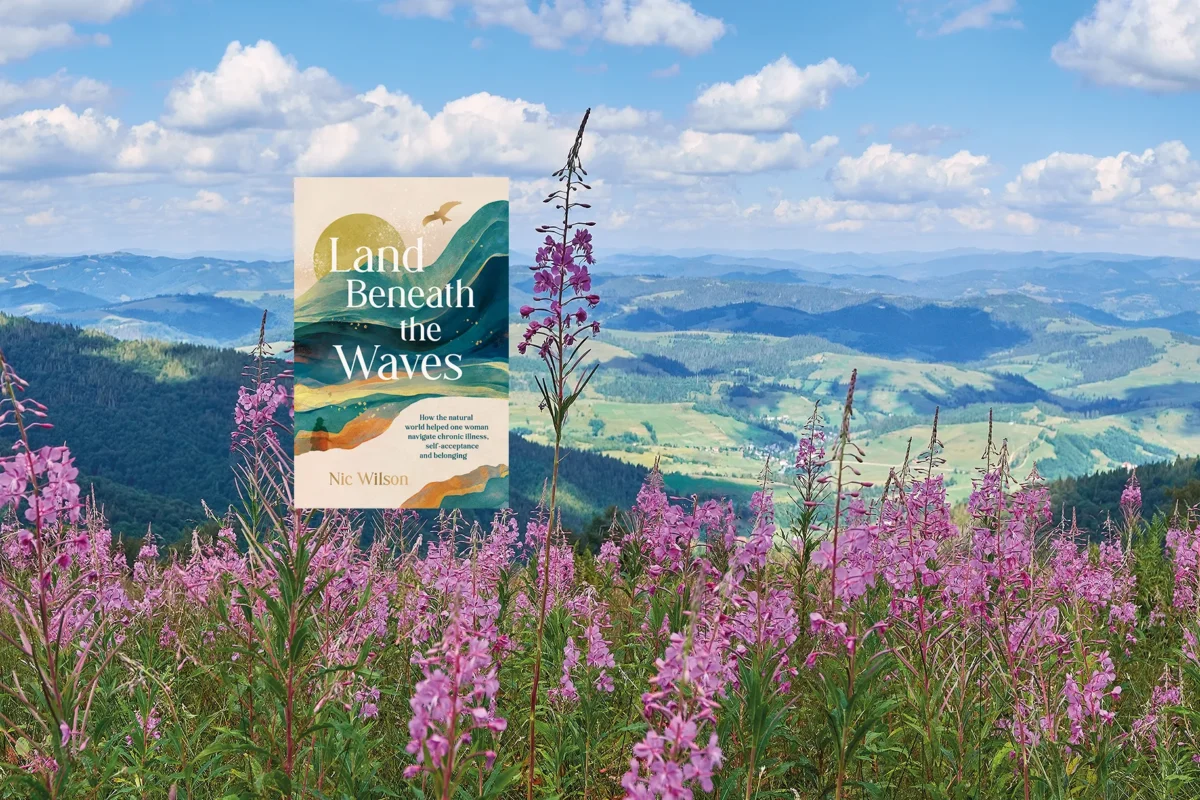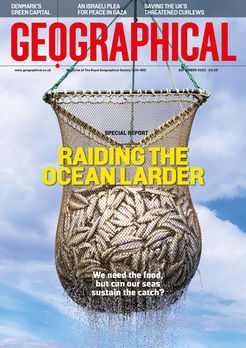
In Land Beneath the Waves, Nic Wilson crafts a powerful, unflinching memoir that blends nature writing with personal history, exploring the tangled roots of chronic illness, memory and the healing, often messy companionship of the wild
By
Books about nature as a healer for mental and physical health are two a-penny and more than a few come across as self-indulgent, written by someone looking to monetise a fleeting brush with mild illness with a navel-gazing memoir. The Land Beneath the Waves isn’t that kind of book: Nic Wilson’s pain is raw and relatable to anyone who has, or has loved ones who have, endured serious mental and physical illness.
This deeply intuitive autobiography isn’t top-heavy on ill health either, so it’s also highly readable for those fortunate enough to have swerved around life’s brambles and thorns. It’s a homage to the joy, the ordinariness and the companionship of nature, written by someone for whom the natural world is in her blood.
Any concerns that this might be a tiresome narrative of ‘how I found solace in nature’, a solipsistic exercise in over-thinking things, are very quickly put to bed. Instead, the book is complex and insightful, often dark and just occasionally rather funny. Key messages are certainly there to be teased out: damage nature and we damage ourselves, physically, mentally and morally. Just as we need to understand what we’ve done to nature before we can fix things, so we must look at our own past to understand why we feel the way that we do. The strength of the writing, however, prevents these truths from decaying into facile homilies.
Wilson begins with her childhood. ‘Before I can write honestly about the wildlife and the local landscape I must enter my own past,’ she writes, only too aware that this will be hard work. Her journal, she informs us, makes for stark reading: ‘Can open; worms everywhere.’ Wilson was in her 40s when she wrote this book and, like her mother before her, struggling with mental and physical ill health. Her own childhood, she writes, taught her that chronic illness was self-indulgent and shameful. Her mother was variously dismissed as a malingerer or advised by a cold-blooded psychiatrist to be sectioned; her father was, wrongly, deemed unable to bring up the children alone.
Wilson has a needle-sharp eye for capturing emotions and talks of being ‘adrenalin primed’ when she woke up, ‘listening for the raised intonation that might indicate mum was not feeling well.’ Nature still takes her back to that time. A blackbird serenade or ‘a flash of buttercups’ can provoke, she says, ‘ripples of recollections. The memories are papery and thin, like honesty seed heads some will blow away but I can see through the layers to the kernels within.’
Childhood was a period when the joy of time in the natural world with her dad provided a filter for her mother’s chronic, debilitating illnesses. Warm, sometimes downright daft, moments with her dad set the backdrop. He might know his wildlife but he manages to feed mince to what he thinks is a snake but proves to be an elephant hawkmoth caterpillar. They squeeze between brambles in pursuit of finding bird’s nests. Wilson notes how dad is prone to the obsessive drive of the birder. ‘I watched with horror…before I could stop him he’d brought the Field Guide to Micromoths. I knew there’d be trouble. …micro-moths were a compulsion too far.’
Extended passages of outstanding nature writing pop up throughout the book, on what Wilson calls the ‘lichenous world of adventure’, the fauna and flora of alleyways (known as ‘snickets’ on her local patch), the sprawling clematis that is known as traveller’s joy. There is an intertwined echo down the ages from her 19th-century farming ancestors, who shared a house with the rural poet John Clare in Helpston.
She writes in an enigmatic, drip-drip, stop-start style, sometimes fluent, breathless, at other times staccato. In one memorable section Wilson writes part-poetically with unconventional syntax, as though she were a chalk stream: ‘sluckslurp/ surgegash/ we race/ and rush/ deeptime/ darkflow/ resurge/ upthrow’.
Localism is central to her natural world, for mind and feet lead her instinctively to the margins, an affinity with edgelands and ‘a profound connection with the natural history’ of her local patch. Her earliest wildlife memories are of rosebay willowherb, a plant known as bombweed for its propensity for colonising bombsites during the Second World War. But there are two sides to every coin: war might be foundational to bombweed’s presence but the latter is also a sign of nature fighting back.
At times the flow of the book feels imperfectly sequenced, the narrative scattered, drifting forward and backward in time, although this may simply reflect the thoughts of an author that flick this way and that. It makes occasionally for disjointed reading, so bear with any such passages, as the whole eventually comes back together, like a bifurcating path that reunites half a mile down the hill.
Not before time, Wilson receives her own meaningful diagnosis and concludes that strength isn’t about shunning chronic illness or ‘beating’ it – but about acceptance. An understanding, as one of the few emotionally intelligent doctors she encounters on her journey puts it, ‘that this moment will pass.’ The Goblin King, as she describes that critical voice on the shoulder, can never be silenced for good, but nature can dial down its incessant chatter, make it tolerable and sometimes even mute it. Nature eases, she writes, ‘the timeless dance where the only certainty is change.’ The land, the sure footing, beneath life’s waves.




